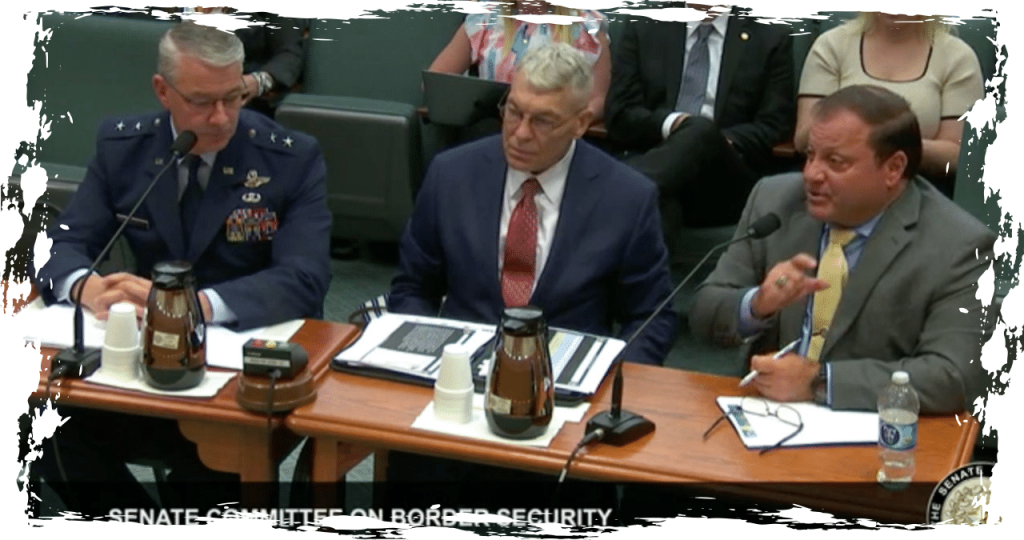During a recent Texas Senate Committee hearing, officials discussed the progress of Texas’ border security mission, Operation Lone Star, and how state efforts have caused illegal entry to shift towards New Mexico, Arizona, and California.
In early 2021, the implementation of policies by the Biden administration triggered the border crisis, leading to an influx of people and a surge in crime that overwhelmed Texas border towns, straining local resources. To address the situation, Governor Greg Abbott established OLS in March 2021, and since then, its operations have expanded. In January 2023, Mike Banks, who had served in the U.S. Border Patrol for decades, was appointed as the new “Border Czar” to assist in spearheading Texas’ initiatives.
During the committee hearing, Banks emphasized the effectiveness of OLS, a program previously covered by The Center Square. He explained that while Texas scaled up its efforts, illegal entry surged in neighboring states like New Mexico, Arizona, and California. Banks revealed that in December 2022, Texas was responsible for 60% of the total cross-border traffic across the southwest border. However, by January 2024, the figure drastically decreased to only 29%.
Shortly after Banks joined OLS operations, he played a crucial role in implementing a strategy called “prevent, deter, interdict” to prevent illegal entry. This was a complementary approach to the interdiction efforts carried out by the Texas Department of Public Safety, other law enforcement officers, and the Texas Military Department.
According to Banks, their hard work has yielded positive results.
According to data from U.S. Customs and Border Protection, there has been a significant reduction of 74% in illegal crossings in Texas since the initiation of Operation Lone Star in March 2021. The latest reports indicate that Texas recorded the lowest number of illegal border crossings in over two years, with fewer than 34,000 reported last month.
According to CBP data, there were approximately 4,200 illegal entries per day in December 2022, totaling to 130,000 illegal border crossers reported in Texas for the month. Fast forward to January 2024, and the number of illegal entries reported in Texas for the month was 35,900, averaging around 1,100 daily entries.
According to Major General Tom Sueltzer, who serves as the Adjutant General for the State of Texas, almost all of the Operation Lone Star personnel have voluntarily stepped up to serve on the border and are actively involved in various tactical operations, including air, land, and water-based activities. The Texas National Guard members have erected numerous border barriers spanning from Brownsville to El Paso, which includes the construction of 72 miles of commercial-grade fence, 133 miles of concertina wire barricades, and 30 miles of anti-climb fencing.
According to him, approximately 2400 National Guard troops from 18 states have been sent to Texas to take part in OLS in the past two years.
According to Steve McCraw, the Director of Texas DPS, the border security challenges faced by Texas are distinct from those of California. Despite sharing 64% of the border with Mexico, Texas only has 11% of the primary federal infrastructure. This makes securing the border a more difficult task for Texas, as it spans 1,254 miles of extremely diverse terrain. However, McCraw stated that multi-agency law enforcement efforts have yielded positive results and boosted morale.
According to him, the smuggling activity in the Rio Grande Valley has been prevalent for decades. However, following Governor Abbott’s orders to deploy additional resources in the area, the CBP Rio Grande Valley Sector was able to significantly reduce the number of illegal entries by April 2022. As a result, it is no longer considered the top region for illegal border crossings in the country.
According to the latest observations, illegal entries have been predominantly shifting towards the west. Initially, it was Del Rio that experienced this influx, which then moved to El Paso, followed by Tucson in Arizona. However, presently, San Diego is leading the nation in terms of illegal entries. A noteworthy fact is that the CBP San Diego Sector only shares 11% of the border with Mexico, yet it owns a significant portion of the federal infrastructure, accounting for 85%. Despite this, there has been no respite from the continuous surge of illegal entries.
He expressed, “We prefer San Diego to remain the center of gravity, and we are committed to that.”
